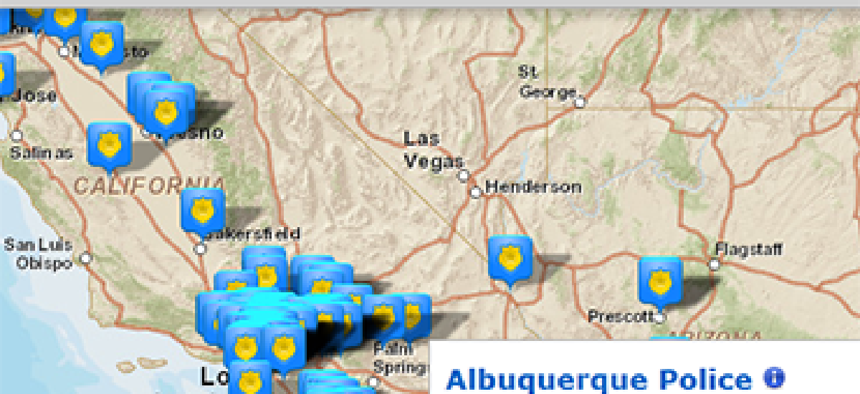How big data fights crime

The Memphis Police Department is using big data and some analysis tools to prevent crime -- an effort that holds lessons for federal agencies.

In addition to providing software for law enforcement, The Omega Group offers a website for the public to research crime in any area of interest.
Memphis, Tenn., is famous for its rich history of music and culture. But in the future, the city might be known for pioneering a new type of big data-powered, real-time crime fighting.
That’s because the Memphis Police Department has been stunningly successful in reducing violent crime in the city after launching an initiative known as Blue CRUSH (Crime Reduction Utilizing Statistical History) with the University of Memphis.
Main story: Managing big data
Related: Charting agency big data progress
Among other advances, Blue CRUSH allows the police department to draw a polygon around an area on a map of the city and immediately receive information on the likelihood of certain types of crime occurring in that region and even when they are likely to occur.
“Other agencies around the world are looking at this,” said John Williams, manager of the Memphis Police Department’s Crime Analysis Unit. “The FBI is looking at it for domestic terrorism and intelligence analysis, so are the [Drug Enforcement Administration] and the Department of Homeland Security. We think this is something that needs to go nationwide.”
In fact, Williams and his team regularly give tours of the department’s Real Time Crime Center (RTCC) for representatives of other law enforcement agencies. The high-tech command and control center has 20 dual-monitor workstations and 42 rear-projection 50-inch displays that receive surveillance imagery from 400 video cameras stationed throughout the city. Nine primary analysts and a manager run the center 24 hours a day, 7 days a week, in three shifts.
“We released our data, such as arrest records, to a group of grant-funded University of Memphis researchers and interns,” Williams said of the system’s origins. “They put together some pilot programs in areas where we were experiencing high [rates of] violent and gun crime.”
At the time, university researchers were using SPSS’ predictive analytics software, which IBM acquired in 2009. Combined with CrimeMapping software from the Omega Group, SPSS helps the Memphis Police Department know where to send its officers to be of the most use.
“This is the key to the success of what we've done,” Williams said. “SPSS can give us a tabulation report in this one little focus area, telling us, ‘You've had three robberies that occurred between 10 p.m. and 1 a.m. Monday night.’ That's how we predict where our crimes are occurring."
RTCC also relies on 14 portable surveillance camera towers that run off gas generators and can be rapidly deployed as needed.
But that’s not all the center is working on. Williams said officials expected to launch another program in the coming weeks called the Automated Case Examination Service. ACES is designed to give officers responding to 911 calls all the pertinent information about suspects and victims — such as accomplices, acquaintances, friends and auto registration information — on a handheld device.
“I do believe that ACES is going to be something that should be adapted into every agency across this country,” Williams said. “It links things like a tree. We really think it’s going to take off.”





